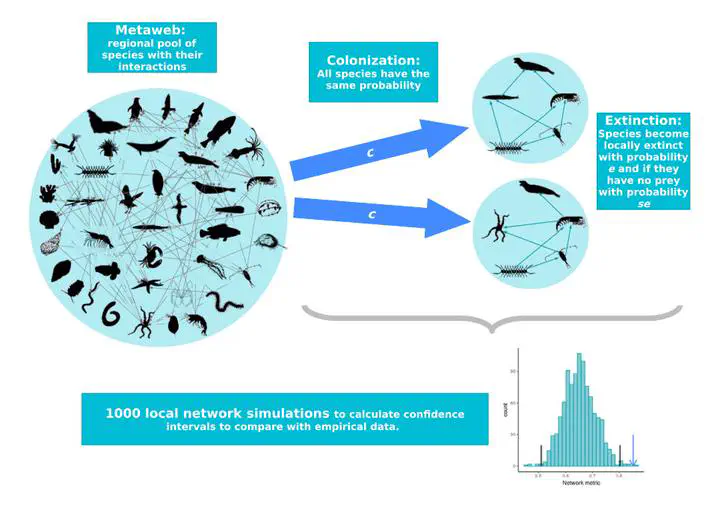Ecological network assembly: how the regional metaweb influences local food webs

Abstract
- Local food webs result from a sequence of colonisations and extinctions by species from the regional pool or metaweb, i.e., the assembly process. Assembly is theorised to be a selective process: whether or not certain species or network structures can persist is partly determined by local processes including habitat filtering and dynamical constraints. Consequently, local food web structure should reflect these processes. 2. The goal of this study was to test evidence for these selective processes by comparing the structural properties of real food webs to the expected distribution given the metaweb. We were particularly interested in ecological dynamics; if the network properties commonly associated with dynamical stability are indeed the result of stability constraints, then they should deviate from expectation in the direction predicted by theory. 3. To create a null expectation, we used the novel approach of randomly assembling model webs by drawing species and interactions from the empirical metaweb. The assembly model permitted colonisation and extinction, and required a consumer species to have at least one prey, but had no habitat type nor population dynamical constraints. Three data sets were used: (1) the marine Antarctic metaweb, with 2 local food-webs; (2) the 50 lakes of the Adirondacks; and (3) the arthropod community from Florida Keys’ classic defaunation experiment. 4. Contrary to our expectations, we found that there were almost no differences between empirical webs and those resulting from the null assembly model. Few empirical food webs showed significant differences with network properties, motif representations and topological roles. Network properties associated with stability did not deviate from expectation in the direction predicted by theory. 5. Our results suggest that — for the commonly used metrics we considered — local food web structure is not strongly influenced by dynamical nor habitat restrictions. Instead, the structure is inherited from the metaweb. This suggests that the network properties typically attributed as causes or consequences of ecological stability are instead a by-product of the assembly process (i.e., spandrels), and may potentially be too coarse to detect the true signal of dynamical constraint.
Type
Publication
Journal of Animal Ecology